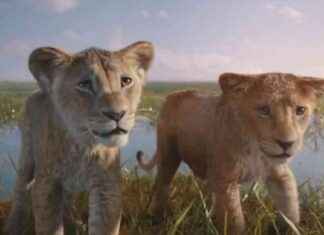To map the trafficking activities across Africa and to better understand the perpetrators, researchers used DNA analysis from the seized elephant trunks as well as evidence like phone records, financial records, and shipping documents. Monday’s study appeared in Nature Human Behavior.
Louise Shelley, who studies illegal trade at George Mason University, said that once you have genetic analysis and other data you can begin to understand the illicit supply chains – that’s absolutely crucial to countering them.
Samuel Wasser, conservation biologist, is a co-author of the study. He hopes that the findings will allow law enforcement officers to target these leaders and not low-level poachers who can be easily replaced by criminal groups.
Wasser, co-director of the Center for Environmental Forensic Science, University of Washington, stated that “if you can stop trade where ivory is being consolidated, exported out of the country,”
The African elephant population is rapidly declining. The total number of African elephants is estimated to be around 415,000. This is a drastic decrease from the 5 million elephants that existed a century ago.
The decline has not been stopped by the 1989 ban international ivory trade. An estimated 500 metric tons (1.1 million) of poached elephant trunks are shipped each year from Africa to Asia.
Wasser has been focusing on three key questions for the past 20 years: “Where is the most ivory being poached? Who is moving it and how many are they?”
He is in contact with wildlife authorities in Kenya and other countries, such as Singapore, Hong Kong, Malaysia, and Malaysia, after they have intercepted ivory shipments. To analyze the DNA, he flies to these countries to collect small samples from the tusks. He now has samples from more than 4,300 elephants that were trafficked out to Africa between 1995-2015.
Robert Pringle, a Princeton University biologist, said that “that’s an incredible, remarkable data set.” He was not involved with the study. He said that such data allows him to “see connections and draw strong inferences.”
Wasser showed that elephant dung and tusk DNA could be used to locate their homes within just a few hundred yards in 2004. He realized that identical DNA was found in ivory tusks from different ivory seizures indicated that they had been harvested from the same animal, and were likely to have been trafficked by the exact same poaching network.
New research expanded that approach to identify the DNA of elephant parents and offspring as well as siblings. It also revealed that very few criminal organizations are responsible for most ivory trafficking in Africa.
The researchers believe that close relatives may have had their tusks poached by the same operator or because female elephants stay in the same family group throughout their lives.
These genetic links can be used as a blueprint by wildlife authorities to find other evidence, such as cell phone records, license plates, shipping documents, and financial statements, in order to link different ivory shipment.
The only seizure of an ivory shipment that was previously intercepted didn’t permit authorities to identify the criminal organization, according to Special Agent John Brown III of Office of Homeland Security Investigations. He has been working on environmental crimes for 25-years.
Brown, who is also co-author, said that scientists’ work in identifying DNA links could “alert” us to connections between individual seizures. He said that this collaborative effort was the “backbone” of many multinational investigations, which are still ongoing.
The poaching hotspots were identified in several countries, including Botswana and Gabon, as well as the Republic of Congo, Tanzania, Botswana and Botswana. Often, tuks are moved to warehouses at another location where they can be mixed with contraband and shipped to ports. There are currently three trafficking hubs: Mombasa in Kenya, Kampala, Uganda, and Lome in Togo.
Wasser stated that two suspects were recently detained in connection with a single such investigation.
Researchers found that ivory smugglers often also move other contraband. For example, 25% of large seizures pangolin scales, a highly-poached anteater like animal, are mixed with ivory.
Brian Arnold, an evolutionary biologist at Princeton University, said that confronting these networks was a great example of genetics being used for conservation purposes.







